By Shaina Russell, Emilie Ens and Ngukurr Yangbala Rangers
Gathering local knowledge on freshwoda teduls
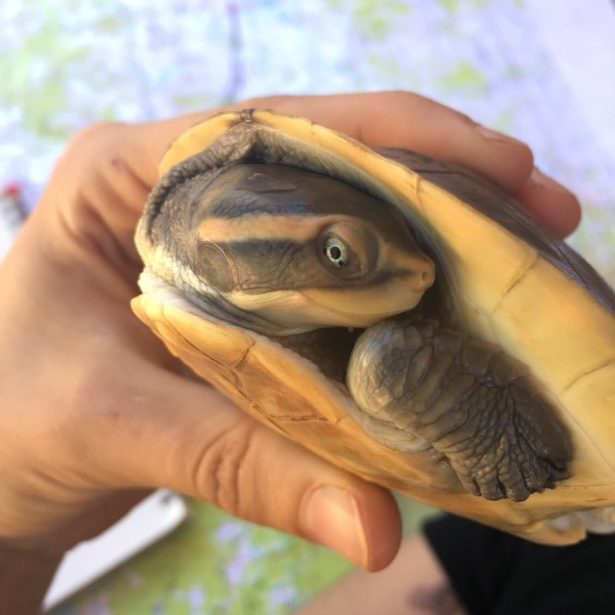
As part of a long term collaboration between the Ngukurr Yangbala Rangers, members of Ngukurr and Numbulwar communities (south east Arnhem Land) and Macquarie University ecologists, we sought to better understand the biocultural knowledge of freshwater turtles, locally known as freshwoda teduls, in the South East Arnhem Land Indigenous Protected Area (SEAL IPA). Human Research Ethics approval was grant by Macquarie University and free, prior informed consent was given by knowledge holders to publish this research.
In 2018 and 2019, the team visited a total of 74 Indigenous Knowledge Holders in their homes (Ngukurr or Numbulwar) or took them out to billabongs. We conducted a series of mapping workshops and interviews to record local knowledge of the distribution, ecology, cultural significance and threats to freshwoda teduls.
“Nowadays, people believe that there’s hardly anything [teduls] now… in the billabong, because of pigs and buffalos. A lot of them [feral pig and buffalo] in the swamps.”
Senior Nunggubuyu knowledge holder, Jangu Nundhirribala described a decline in freshwoda teduls around Numbulwar due to feral ungulates.
Filling freshwater turtle knowledge gaps in the ALA
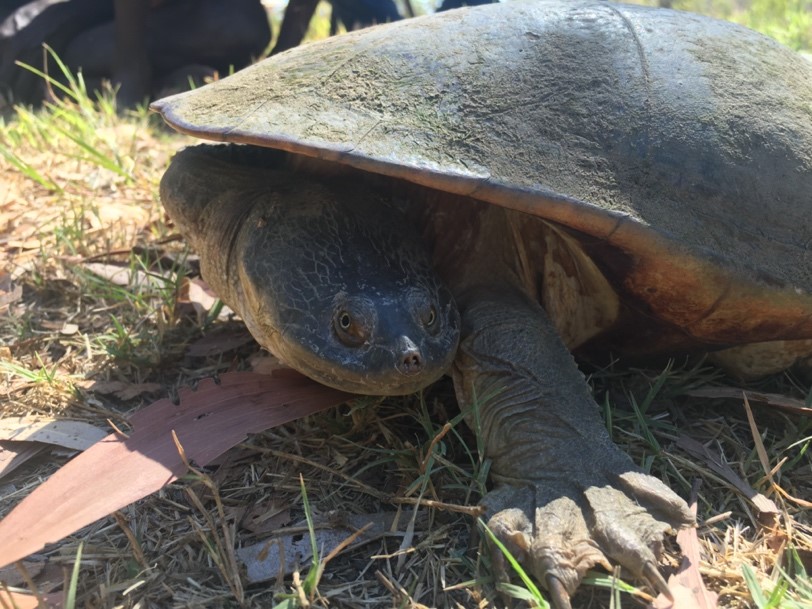
When we looked in the ALA for freshwater turtle species records there were only 12 in the SEAL IPA. To fill this knowledge gap, we mapped local Indigenous Knowledge Holder sightings of past freshwoda teduls and negotiated with the ALA to contribute this dataset to the national ALA species knowledge database. This was the first time Indigenous knowledge from the living memories of Indigenous Knowledge Holders was added to the ALA database alongside scientific species recordings.
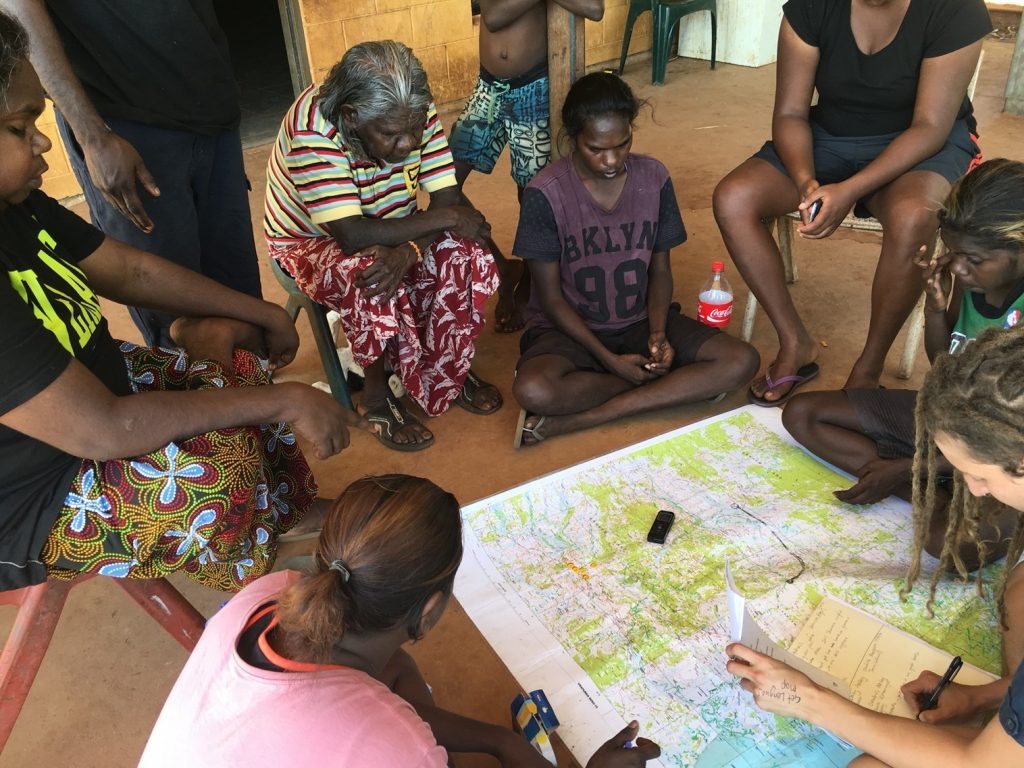
Adding Indigenous Knowledge Holder sightings of freshwoda teduls to the ALA
Indigenous knowledge holders identified three different freshwoda tedul “types” that occurred in the SEAL IPA:
- longnek tedul (Northern long-neck turtle, Chelodina rugosa)
- jinggijinggi tedul (Cann’s long-neck turtle, Chelodina canni) and
- shotnek tedul (Northern Snapping Turtle, Elseya dentata andWorrell’s Short-Necked Turtle, Emydura subglobosa worrelli)
The longnek tedul (436) was the most common species recorded followed by shotnek tedul (258) and jinggijinggi tedul (59). Most (695) occurrence points were inside the SEAL IPA; however, some (58) fell outside the SEAL IPA boundary (see Figure below). This knowledge greatly expanded the ALA freshwater turtle records for the SEAL IPA as previously there were only 12 (C. rugosa n = 10and E. dentata n = 2). The project added 753 records to the ALA: Longnek tedul (Chelodina oblonga; 436), jinggijinggitedul (Chelodina canni; 59) and shotnek tedul (Elseya dentata, Emydura subglobosa; 258).
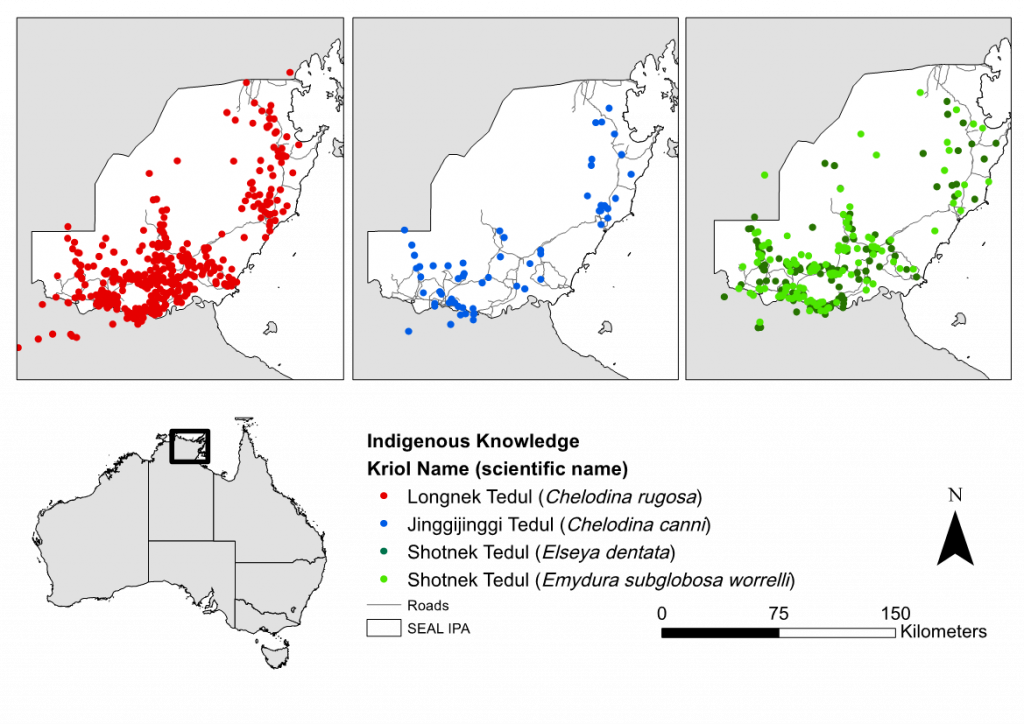
Indigenous knowledge of freshwaoda teduls in the South East Arnhem Land IPA.
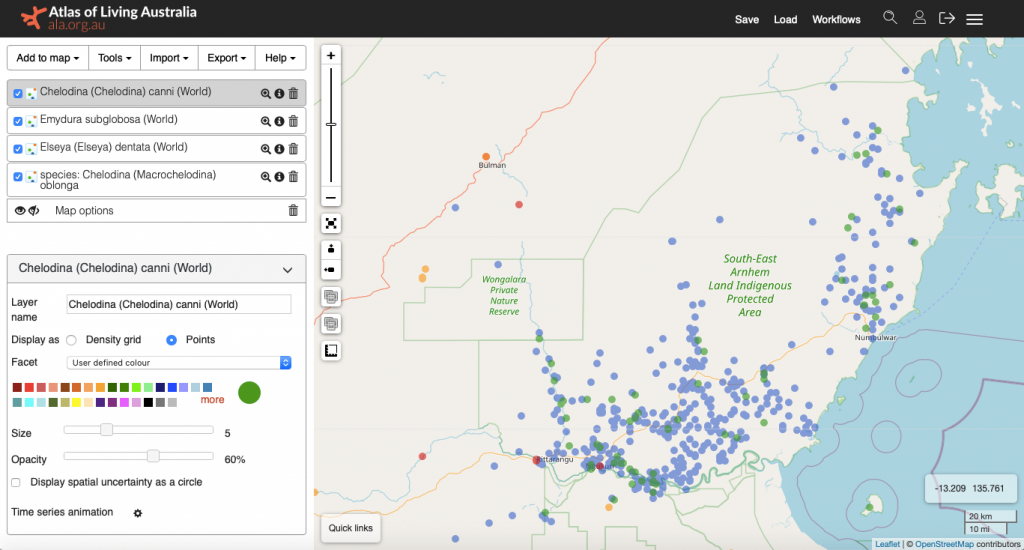
Aboriginal Elders contribute valuable knowledge on species behaviour and diet and physiology
Knowledge holders contributed rich biocultural knowledge of freshwoda teduls.
“All over you get longnek and shotnek together, except on the floodplain you get all longnek.”Numbulwar Numbirindi Ranger Adam Manggurra, stated that the jinggijinggi tedul was present only in freshwater.”
Ngandi Elder Heather Ponto (nee Thompson) described different freshwoda tedul habitat preferences.
Knowledge holders described seasonal knowledge and indicators that related to freshwoda tedul hunting, behaviour, diet and physiology, including aestivation, fatness and breeding cycles.
“That cold weather time, when that wind blows cold, that’s the time we know [to hunt for tedul]”.
Davis Daniels
People said teduls were fat in the dry (cold) season and in the late dry season in places where the surface water dries up, longnek teduls are called ngangga which describes a period of dormancy (aestivation) where they bury themselves in the mud until the rain comes again.
“In the dry season people hunt for ngangga turtles by poking long sticks (or crowbars) into the dried mud and they listen for a tap sound. “
Yangbala Ranger Kiefer Hall
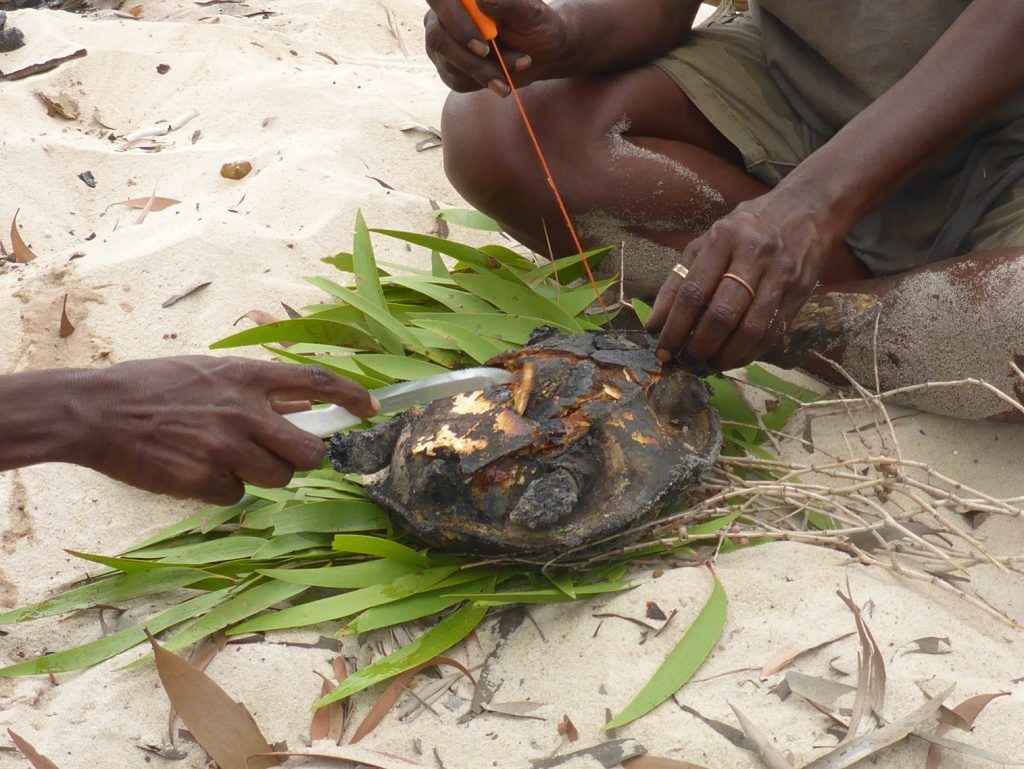
Cultural significance of freshwoda teduls
Freshwoda teduls have widespread cultural significance to Indigenous people of the SEAL IPA. Knowledge holders discussed how freshwoda teduls are intimately woven through people’s cultural lives and ceremonies. Kevin Rogers explained that freshwoda teduls are connected through ceremony and certain people have roles as owners and caretakers according to the kinship system and these roles and responsibilities are maintained through ceremony. He described how all people and things are connected through songlines and how this forms people’s identity:
“We got two types of freshwada tedul, one is longnek and one is shotnek. We call that shotnek, wini, and that belongs to us mob. It’s part of our ceremony too, it’s in our songlines and even that longnek tedul belongs to us mob, Cherry’s mob. So they have a story, through our songlines and our ceremony. One is a shotnek… that other one is… Longnek tedul, and he’s the junggayi (points to Cherry’s son), they the main caretakers, junggayi we call him. So it’s a responsible name… we maintain that through our ceremonies… it’s still part of us, that’s what makes us who we are. Not only the teduls, the trees, the birds, stones, everything.”
Senior Wubuy knowledge holder Galiliwa Nunggarrgalli whose totem is longnek tedul. He is the owner of ḏalmaarrang (longnek tedul) and his hair can be used to attract tedul while hunting.
“If you cut my hair and put it in the billabong, burn it and put it in the billabong, wait for couple of hours, maybe one or two hours… you can see lots of teduls looking at you.”
Threats to freshwoda teduls
Some people talked about a significant decrease in tedul abundance:
“When we were kids, tedul was everywhere. These days you hardly find [them], even here walking at Roper River [Ngukurr] itself, [we used to] find tedul walking here at night, in town. ”
Davis Daniels
Group interviews revealed that the main threats to freshwoda teduls (all species combined) were natural predators (birds of prey (eagles and hawks), crocodiles, goannas and dingoes; n = 19), feral animals (n = 17) and climate change (n = 8). Four groups stated that there were no threats to freshwoda teduls in this region.
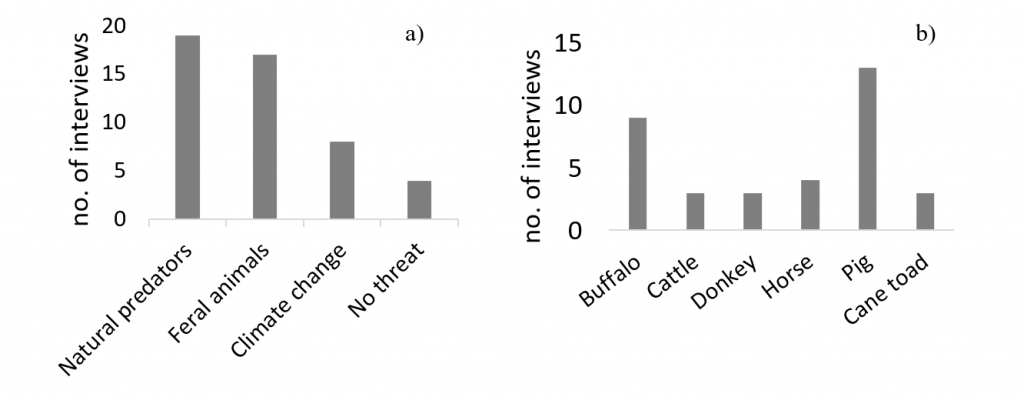
Of the feral animals, pigs (n=13) were most often mentioned as a threat to freshwoda teduls, followed by feral water buffalo (n=9), horse (n=4), donkey (n=3), cattle (n=3) and cane toads (n=3). As stated by several knowledge holders, pig and buffalo were considered the most damaging feral ungulates as they trample and eat aestivating freshwoda teduls.
“They get trampled by the buffalos and pigs… trample all over the billabong.”
Cherry Daniels
“Pigipigi [pigs] too, they eat ḏalmaarrang [aestivating longnek teduls].”
Rena Wayayun Guyula
Changes in weather patterns were highlighted by Ngandi senior knowledge holder Hubert Rami as a threat to freshwater tedul populations:
“Hardly had any rain at the moment. Get maybe two, three month’s rain in a year and that’s it. That’s all we get… teduls are dying maybe because of less rain. Because they live in [the] water all the time, water creatures. If there is no water, then everything dies. The tedul stays in the mud [aestivating]. Mud gets hard with no rain, then how the tedul going to get out?”
The timing of pig invasion in south east Arnhem Land is estimated to be around the 1990s, which aligned with group interview discussions regarding timing of changes to Country, freshwoda tedul abundance and traditional hunting practices.
“Feral animals now, like when them pigs and buffalo walk on the wet soil, they leave them marks you know. New millennium. Everything been just change. Destruction of the land, hunting place.”
Kara Daniels
New data in the ALA: personal memories of species observations
This was the first time Indigenous accounts of species occurrences were contributed as data points to the Atlas of Living Australia. With the consent of Indigenous Holders, Indigenous knowledge such as this has the potential to contribute valuable information to national databases, especially for culturally significant species that people have strong connections with. Although we’ve added hundreds of data points from Indigenous people’s memory of turtle hunting in their lifetimes, the accompanying biocultural knowledge shared by knowledge holders reinforces the global conservation concern of freshwater turtle decline.
Acknowledgements
The authors wish to acknowledge the Traditional Owners of the South East Arnhem Land IPA where this research was conducted, and The Nature Conservancy for funding. We also acknowledge that Rukshana Sultana contributed to this project through her Masters thesis (Macquarie University).
To view this data in the ALA, visit:
- Occurrence records for Mapimbat tedul proujek: Indigenous knowledge of freshwater turtle species occurrence in the South East Arnhem Land Indigenous Protected Area
- The data resource page for Mapimbat tedul proujek
Information about the authors:
- Shaina Russell – Postdoctoral Researcher, Macquarie University
- Emilie Ens – Senior Lecturer, Macquarie University
- Ngukurr Yangbala Rangers – A group of young Aboriginal people from the Ngukurr Community who worked on Natural and Cultural Resource Management projects in the SEAL IPA between 2016 and 2019, funded by The Nature Conservancy.